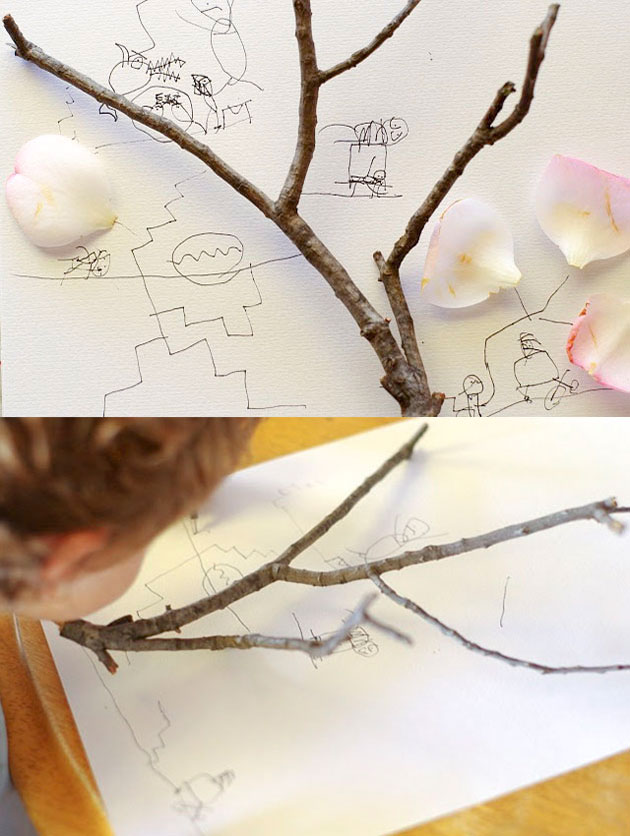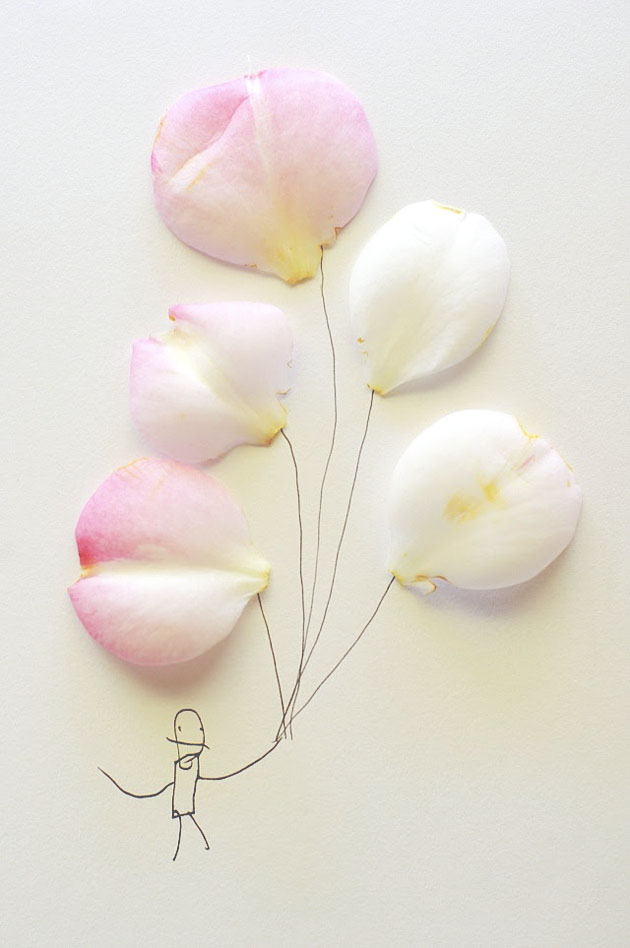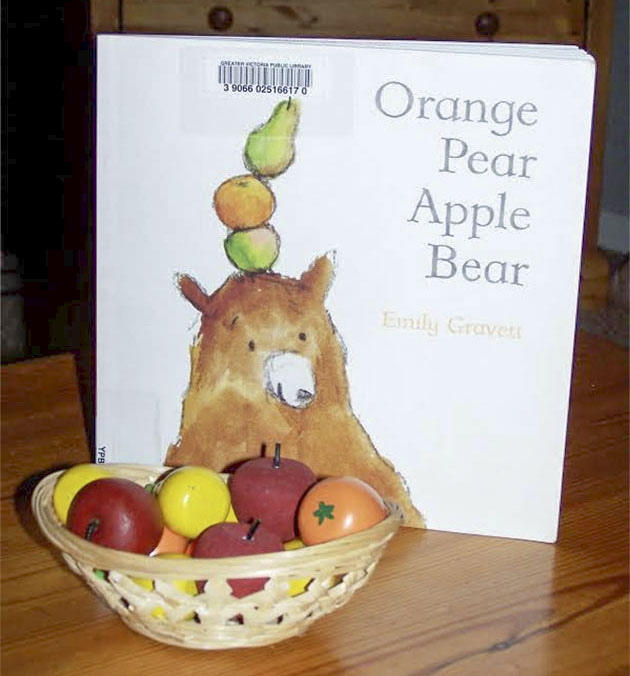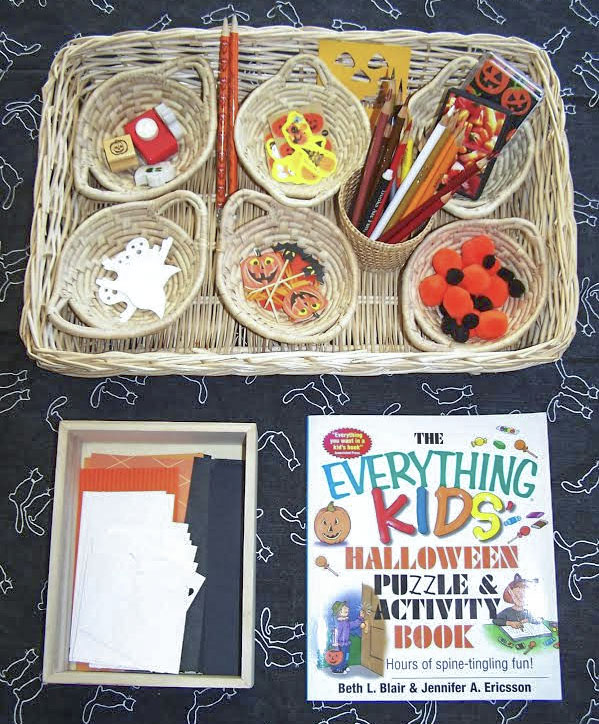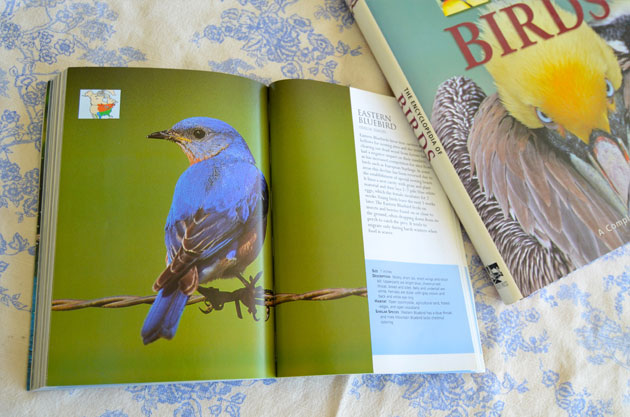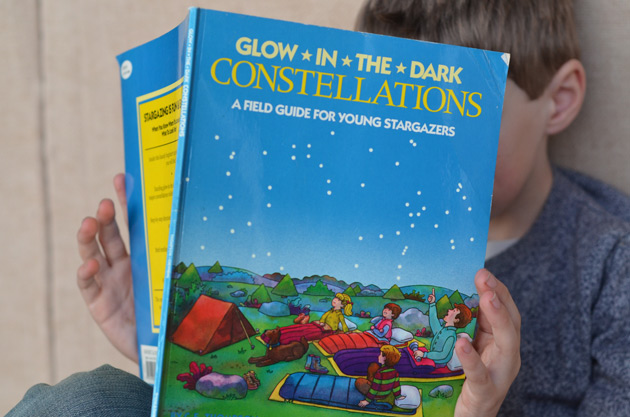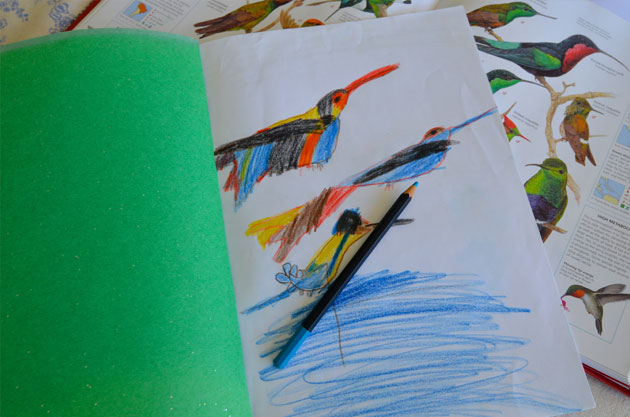Tinkering with TinkerLab: DIY Lava Lamp

I am so happy to be a part of TinkerLab’s Blog Tour for Rachelle’s new book, Tinkerlab: A Hands-On Guide for Little Inventors. I have been a big fan of the TinkerLab blog for many years and love the perspective that Rachelle Doorley brings to her work as a previous art and museum educator. All of the activities that she shares encourage open-ended discovery and experimentation.
In fact, I had the opportunity to meet her in person a couple of years ago during a visit to California (we share the same publisher) and can attest that she is just as inspiring in person as she is in her writing!
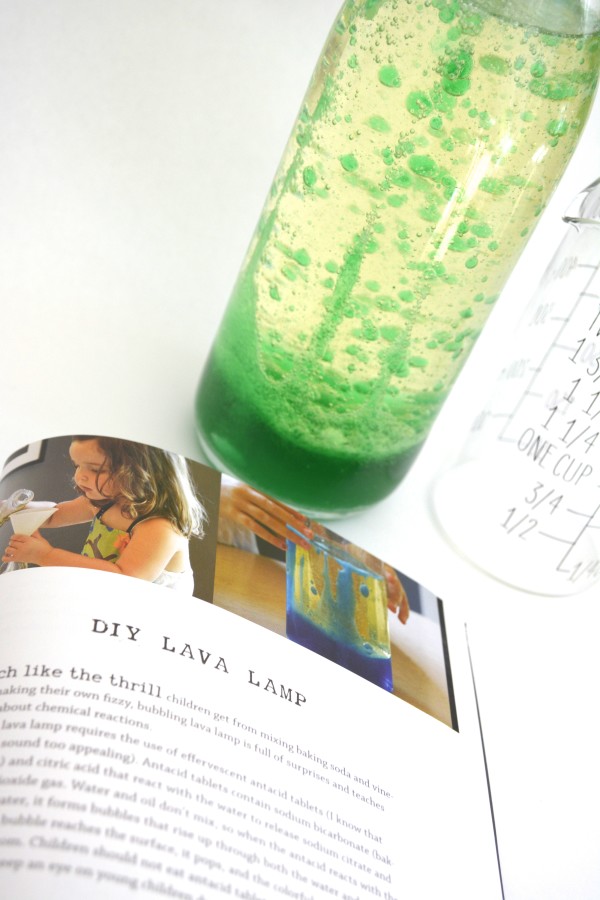
Being that my daughters think lava lamps are super cool, we decided to try making our own! The instructions were very clear, easy to follow, and included great facts about the chemical reactions that were taking place.

The girls loved creating their lava lamp concoction and returned again and again to experiment with it many times over the next couple of days.
To create your own lava lamp, follow the steps below…

- Fill your bottle 3/4 of the way with oil.
- Add water to your bottle leaving 1 to 2 inches of empty space up top. Wait until the water reaches the bottom of the bottle.
- Add 3 to 4 drops of food coloring.
- Cut the antacid tablet into 4 pieces and start out by adding 1/4 of a tablet at a time. Then get wild and crazy and add bigger pieces!
Bonus: For extra excitement you can place a LED light or a flashlight under or behind your bottle to see what happens…
For a great review on why oil and water don’t mix, click here.
For more details on this activity and many more, make sure to check out, Tinkerlab: A Hands-On Guide for Little Inventors.
To get your own copy, simply visit your favorite book-seller:
Make sure to visit the other inspiring blogs on the TinkerLab Blog Tour…
June 10 – The Artful Parent
June 11 – Toddler Approved
June 12 – Creative with Kids
June 13 – Red Ted Art
June 16 – Not Just Cute
June 17 – Kids Activities Blog
June 18 – Rookie Moms
June 19 – Peanut Blossom
June 20 – Modern Parents, Messy Kids
June 23 – The Imagination Tree
June 24 – Babble Dabble Do
June 25 – Pink and Green Mama
June 26 – Make and Takes
June 30 – Playful Learning
July 3 – Imagine Childhood
July 4 – A Mom with a Lesson Plan
July 7 – Nurture Store
July 9 – Simple Kids
July 10 – Kids Stuff World
July 11 – Let’s Lasso the Moon
July 14 – Ain’t No Mom Jeans
July 15 – Fun at Home with Kids
TBD – Childhood 101





